Showing Spotlights 297 - 304 of 627 in category All (newest first):
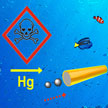 Researchers are applying various strategies to designing nanoscale propulsion systems by either using or copying biological systems such as the flagellar motors of bacteria or by employing various chemical reactions. Different practical micromotor applications, ranging from drug delivery, to target isolation and environmental remediation, have thus been reported over the past 2-3 years. Yet, there are no reports on a nanomachine-based toxicity assay approach, analogous to the use of live aquatic organisms for testing the quality of our water resources.
Researchers are applying various strategies to designing nanoscale propulsion systems by either using or copying biological systems such as the flagellar motors of bacteria or by employing various chemical reactions. Different practical micromotor applications, ranging from drug delivery, to target isolation and environmental remediation, have thus been reported over the past 2-3 years. Yet, there are no reports on a nanomachine-based toxicity assay approach, analogous to the use of live aquatic organisms for testing the quality of our water resources.
Dec 19th, 2012
 Spores are reproductive structures that have developed in nature to preserve genetic information and protect cellular components in harsh conditions and against external stresses such as nutrient deprivation, high temperatures, or radiation. Spores form part of the life cycles of many bacteria and plants. The cellular components of a spore are protected against the environment by a very robust hierarchical shell structure that allows it to survive for many years under hostile conditions found naturally that can easily and quickly kill normal cells. By developing the concept of artificial spores, researchers have been developing strategies to coat single cells with a hard, protective layer of a hard thin shells.
Spores are reproductive structures that have developed in nature to preserve genetic information and protect cellular components in harsh conditions and against external stresses such as nutrient deprivation, high temperatures, or radiation. Spores form part of the life cycles of many bacteria and plants. The cellular components of a spore are protected against the environment by a very robust hierarchical shell structure that allows it to survive for many years under hostile conditions found naturally that can easily and quickly kill normal cells. By developing the concept of artificial spores, researchers have been developing strategies to coat single cells with a hard, protective layer of a hard thin shells.
Nov 28th, 2012
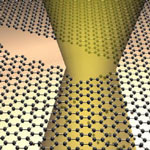 Within graphene research, transmission electron microscopy (TEM) has proven to be an extremely useful and versatile characterization tool. However, the electron beam can interact with the sample leading to its modification during the process. This may be an undesirable effect and measures to avoid this do exist. In other cases, however, electron beam-sample interactions can be useful for nanoengineering or nanomanufacturing. It is therefore crucially important to understand how a material responds to the electron beam and the environment inside a TEM. In new work, researchers have now demonstrated that damage-free sculpting of graphene with condensed electron beams is feasible.
Within graphene research, transmission electron microscopy (TEM) has proven to be an extremely useful and versatile characterization tool. However, the electron beam can interact with the sample leading to its modification during the process. This may be an undesirable effect and measures to avoid this do exist. In other cases, however, electron beam-sample interactions can be useful for nanoengineering or nanomanufacturing. It is therefore crucially important to understand how a material responds to the electron beam and the environment inside a TEM. In new work, researchers have now demonstrated that damage-free sculpting of graphene with condensed electron beams is feasible.
Nov 12th, 2012
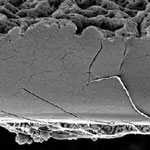 In order to fabricate stimuli-responsive materials, researchers have shown a lot of interest in asymmetric materials such as modulated gels which consist of a controlled layer that is responsive to an environmental stimuli and a nonresponsive substrate layer. And while much effort has gone into creating free-standing films through layer-by-layer (LbL) assembly, relatively little attention has been paid to the asymmetric properties or functionalization of the two surfaces of such free-standing layer-by-layer films. In new work, researchers have now reported the fabrication of asymmetric free-standing layer-by-layer film with asymmetric wettability - one surface is superhydrophobic and the other one is hydrophilic. The superhydrophobic side is water-repellent while the hydrophilic side can absorb/desorb water easily.
In order to fabricate stimuli-responsive materials, researchers have shown a lot of interest in asymmetric materials such as modulated gels which consist of a controlled layer that is responsive to an environmental stimuli and a nonresponsive substrate layer. And while much effort has gone into creating free-standing films through layer-by-layer (LbL) assembly, relatively little attention has been paid to the asymmetric properties or functionalization of the two surfaces of such free-standing layer-by-layer films. In new work, researchers have now reported the fabrication of asymmetric free-standing layer-by-layer film with asymmetric wettability - one surface is superhydrophobic and the other one is hydrophilic. The superhydrophobic side is water-repellent while the hydrophilic side can absorb/desorb water easily.
Oct 29th, 2012
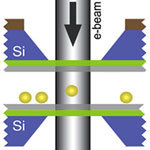 The idea of using laser light to trap or levitate small particles goes back to the pioneering work by Arthur Ashkin of Bell Laboratories in the 1970s and 1980s. Ashkin found that radiation pressure - the ability of light to exert pressure to move small objects - could be harnessed to constrain small particles. This discovery has since formed the basis for scientific advances such as the development of optical tweezers, which are frequently used to control the motion of small biological objects. However, optical trapping of nanoparticles remains a challenging task because the forces are often too small when the sizes of the objects are reduced to the nanometer scale. New findings from scientists at Lawrence Berkeley National Laboratory and National University of Singapore fill a gap and also open the door to new discoveries by demonstrating trapping and manipulating nanometer size particles using an electron beam instead of optical forces. It could also lead to new force spectroscopy where nanostructures can be assembled one nanoparticle at a time.
The idea of using laser light to trap or levitate small particles goes back to the pioneering work by Arthur Ashkin of Bell Laboratories in the 1970s and 1980s. Ashkin found that radiation pressure - the ability of light to exert pressure to move small objects - could be harnessed to constrain small particles. This discovery has since formed the basis for scientific advances such as the development of optical tweezers, which are frequently used to control the motion of small biological objects. However, optical trapping of nanoparticles remains a challenging task because the forces are often too small when the sizes of the objects are reduced to the nanometer scale. New findings from scientists at Lawrence Berkeley National Laboratory and National University of Singapore fill a gap and also open the door to new discoveries by demonstrating trapping and manipulating nanometer size particles using an electron beam instead of optical forces. It could also lead to new force spectroscopy where nanostructures can be assembled one nanoparticle at a time.
Oct 16th, 2012
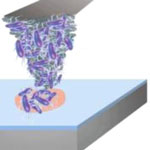 Dip-Pen Nanolithography (DPN) is a scanning probe lithography technique in which the tip of an atomic force microscope is used to 'write' molecules directly onto a substrate, allowing nanostructured surface patterning on scales of under 100 nm. Since the driving force of DPN for transporting materials is molecular diffusion through the sub-micrometer sized water meniscus formed between the AFM tip and the surface, large-sized ink materials are not efficiently transported through this water meniscus. For this reason, bacterial cells (1-2 micrometer or larger in length) patterning with DPN technique is often considered to be impossible. Overcoming this limitation, researchers have developed a 'stamp-on' DPN method that uses a previously developed hydrogel-coated tip and carrier agents to generate micrometer-sized bacterial cells.
Dip-Pen Nanolithography (DPN) is a scanning probe lithography technique in which the tip of an atomic force microscope is used to 'write' molecules directly onto a substrate, allowing nanostructured surface patterning on scales of under 100 nm. Since the driving force of DPN for transporting materials is molecular diffusion through the sub-micrometer sized water meniscus formed between the AFM tip and the surface, large-sized ink materials are not efficiently transported through this water meniscus. For this reason, bacterial cells (1-2 micrometer or larger in length) patterning with DPN technique is often considered to be impossible. Overcoming this limitation, researchers have developed a 'stamp-on' DPN method that uses a previously developed hydrogel-coated tip and carrier agents to generate micrometer-sized bacterial cells.
Oct 11th, 2012
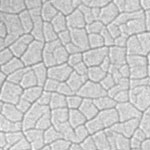 One way to use engineered nanoparticles in the real world is in thin films. Such nanoparticulate films are thin layers, sometimes only a few nanometers thick, of composite materials that contain nanoparticles. These new materials have a wide range of applications in drug delivery, nanoelectronics, magnetic storage devices, sensors, or optical coating. However, most processes used to fabricate thin nanocomposite films with high nanoparticle fillings suffer from random nanoparticle agglomeration causing formation of irregularly shaped nanostructured features within the composite. Another complication arises from cracks that develop during the fabrication of the films. Researchers have now described a simple method for fabricating thick, crack-free silica nanoparticle films by subsequent deposition of thin, crack-free silica nanoparticle multilayers.
One way to use engineered nanoparticles in the real world is in thin films. Such nanoparticulate films are thin layers, sometimes only a few nanometers thick, of composite materials that contain nanoparticles. These new materials have a wide range of applications in drug delivery, nanoelectronics, magnetic storage devices, sensors, or optical coating. However, most processes used to fabricate thin nanocomposite films with high nanoparticle fillings suffer from random nanoparticle agglomeration causing formation of irregularly shaped nanostructured features within the composite. Another complication arises from cracks that develop during the fabrication of the films. Researchers have now described a simple method for fabricating thick, crack-free silica nanoparticle films by subsequent deposition of thin, crack-free silica nanoparticle multilayers.
Sep 26th, 2012
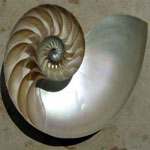 The remarkable properties of some natural materials have motivated many researchers to synthesize biomimetic nanocomposites that attempt to reproduce Nature's achievements and to understand the toughening and deformation mechanisms of natural nanocomposite materials. One of the best examples is nacre, the pearly internal layer of many mollusc shells. CaCO3 has long been considered to be a genuine chemical component to approximate nacre. However, only supported polycrystalline CaCO3 (calcite) films have been reported so far. With rapid advancement of nanotechnology, it would be highly desirable to synthesize freestanding CaCO3 tablet building blocks in large quantities, ideally identical or similar to those in natural nacre, using solution-based methods. Now, for the first time, scientists have devised a facile chemical method to synthesize single-crystalline CaCO3 nanotablets in large quantities and provided genuine primary building blocks for the fabrication of nacreous inorganic-organic hybrids.
The remarkable properties of some natural materials have motivated many researchers to synthesize biomimetic nanocomposites that attempt to reproduce Nature's achievements and to understand the toughening and deformation mechanisms of natural nanocomposite materials. One of the best examples is nacre, the pearly internal layer of many mollusc shells. CaCO3 has long been considered to be a genuine chemical component to approximate nacre. However, only supported polycrystalline CaCO3 (calcite) films have been reported so far. With rapid advancement of nanotechnology, it would be highly desirable to synthesize freestanding CaCO3 tablet building blocks in large quantities, ideally identical or similar to those in natural nacre, using solution-based methods. Now, for the first time, scientists have devised a facile chemical method to synthesize single-crystalline CaCO3 nanotablets in large quantities and provided genuine primary building blocks for the fabrication of nacreous inorganic-organic hybrids.
Sep 20th, 2012
 Researchers are applying various strategies to designing nanoscale propulsion systems by either using or copying biological systems such as the flagellar motors of bacteria or by employing various chemical reactions. Different practical micromotor applications, ranging from drug delivery, to target isolation and environmental remediation, have thus been reported over the past 2-3 years. Yet, there are no reports on a nanomachine-based toxicity assay approach, analogous to the use of live aquatic organisms for testing the quality of our water resources.
Researchers are applying various strategies to designing nanoscale propulsion systems by either using or copying biological systems such as the flagellar motors of bacteria or by employing various chemical reactions. Different practical micromotor applications, ranging from drug delivery, to target isolation and environmental remediation, have thus been reported over the past 2-3 years. Yet, there are no reports on a nanomachine-based toxicity assay approach, analogous to the use of live aquatic organisms for testing the quality of our water resources.
 Subscribe to our Nanotechnology Spotlight feed
Subscribe to our Nanotechnology Spotlight feed





